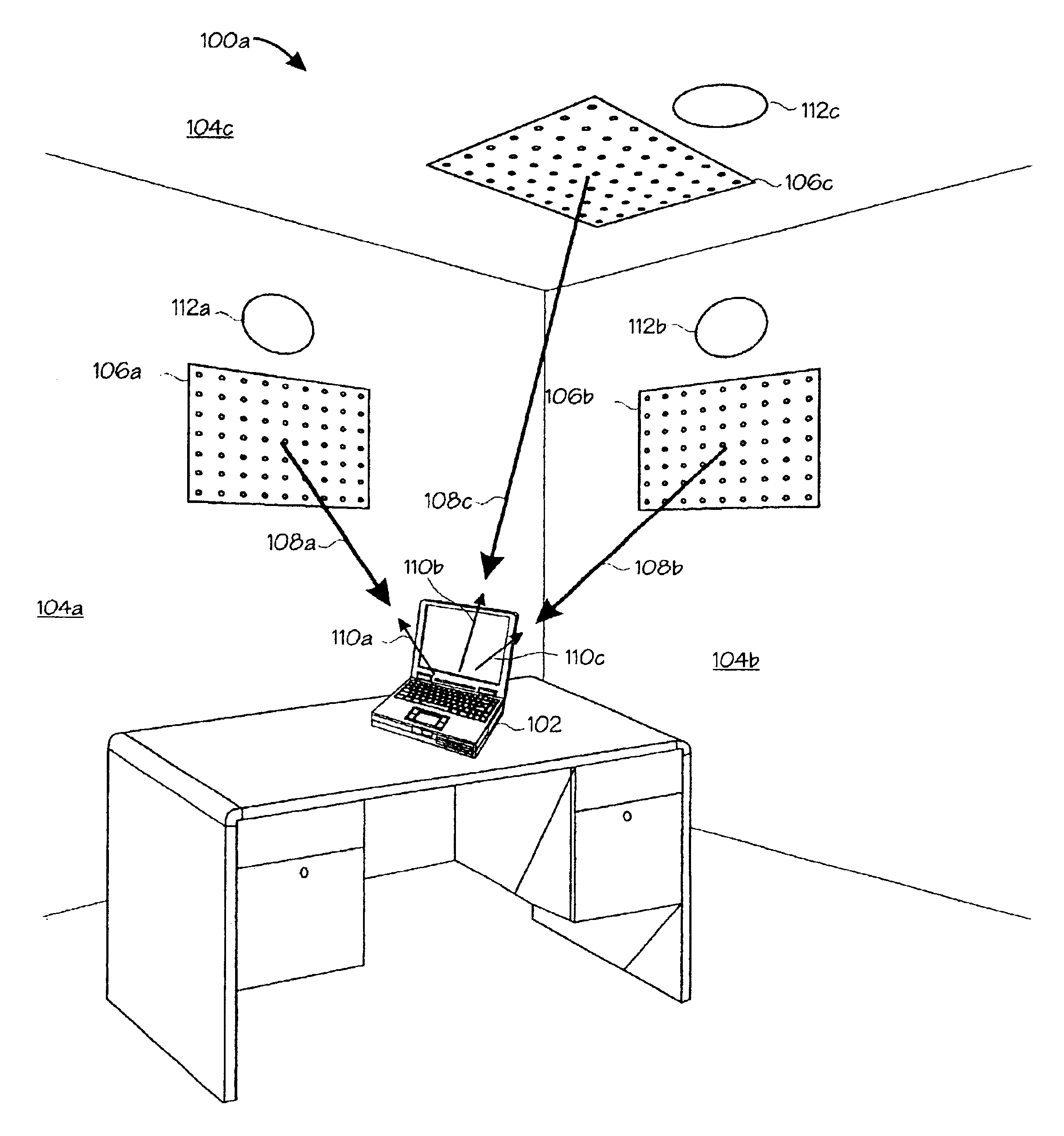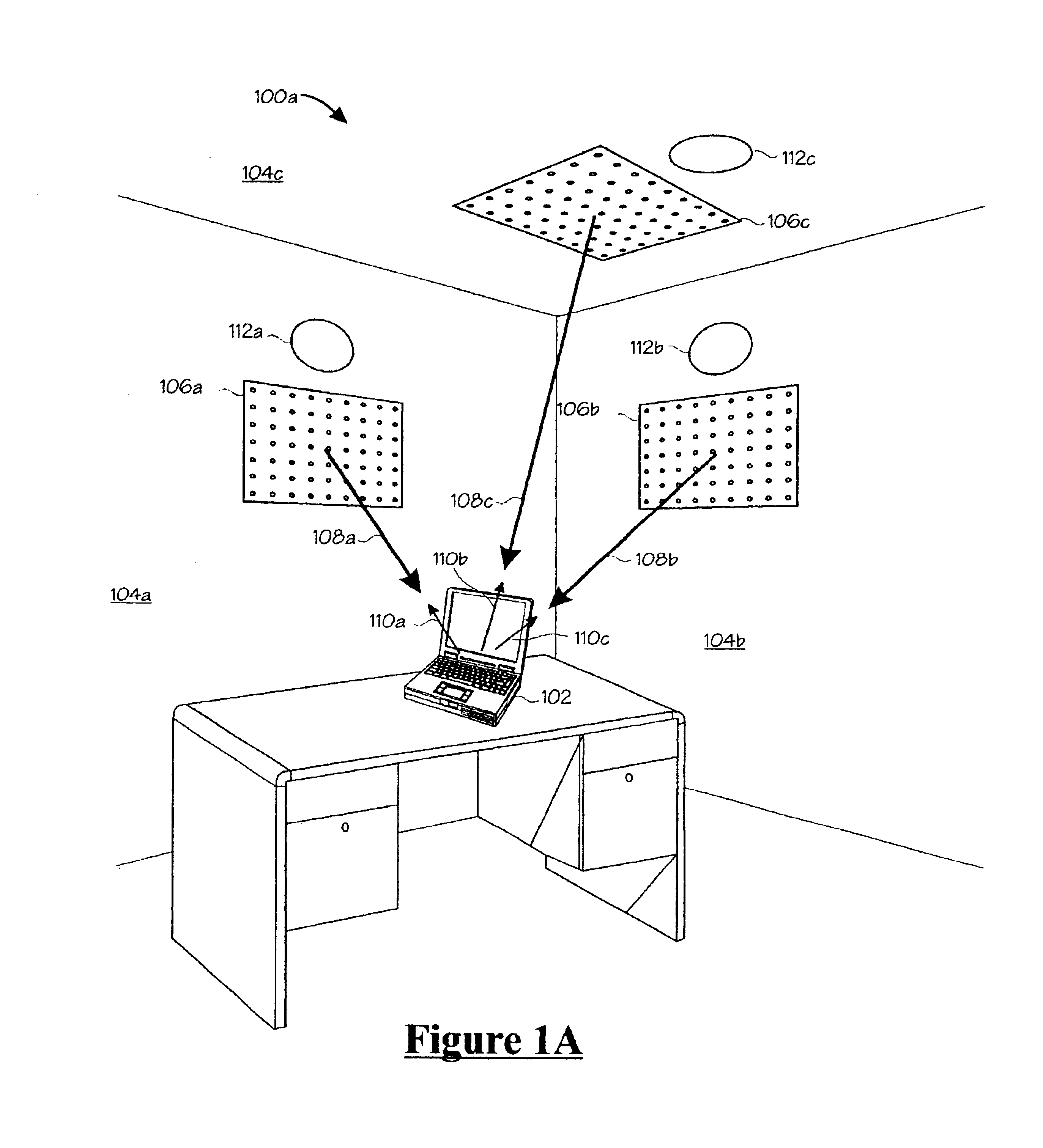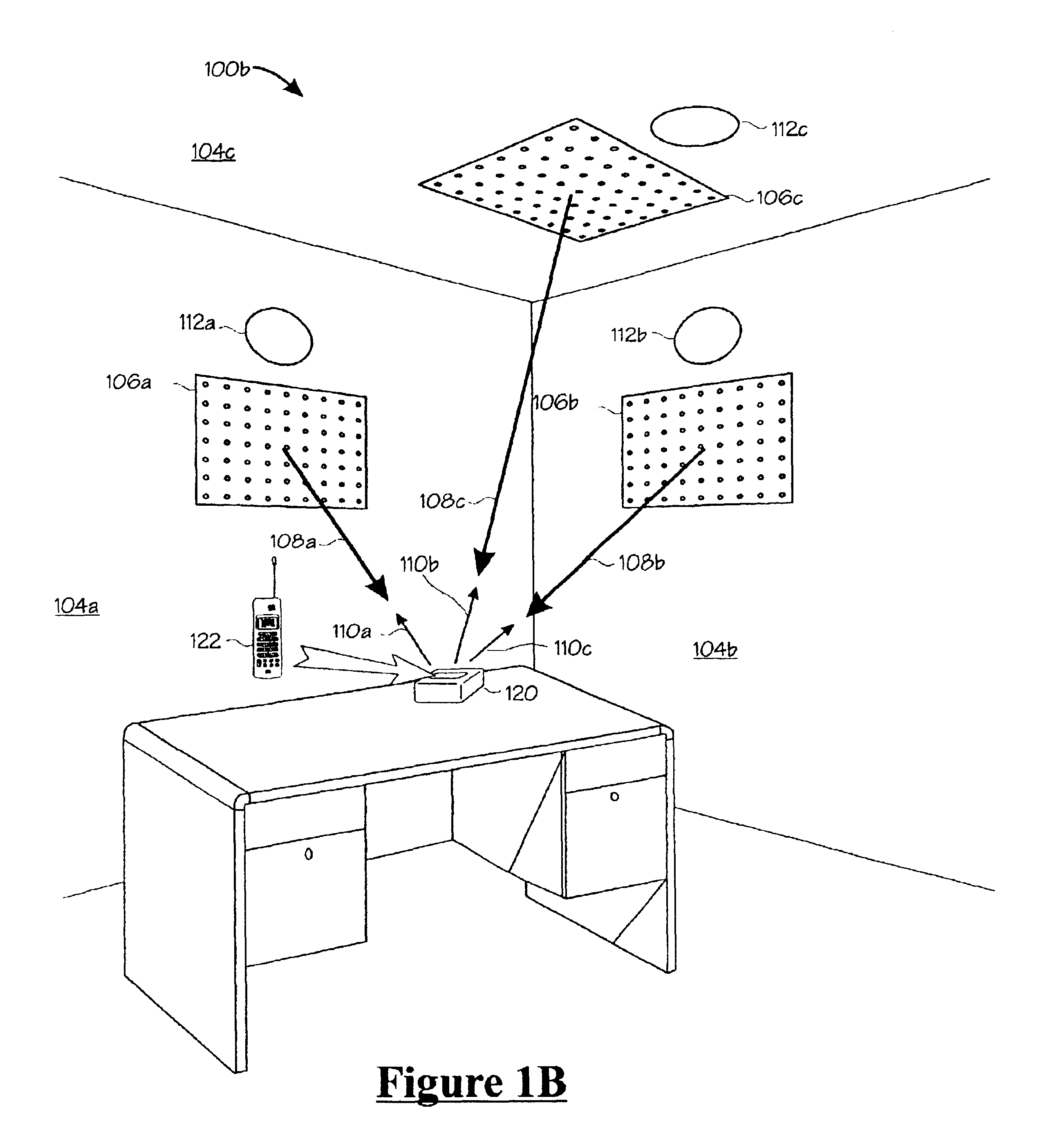Charging of devices by microwave power beaming
- Summary
- Abstract
- Description
- Claims
- Application Information
AI Technical Summary
Benefits of technology
Problems solved by technology
Method used
Image
Examples
Embodiment Construction
[0022]The present inventive technique provides for charging and / or powering of an electrical / electronic device using microwave energy. One or more adaptive-phased arrays are used to focus one or more “rectennas” (rectifying antennas) disposed within the consumer device. Microwave energy reaching the rectenna(s) is converted into DC electrical energy that is used to charge a battery or other energy storage device within the consumer device. The DC electrical energy can also be used to provide primary power for the consumer device while the battery or storage device is being charged.
[0023]FIG. 1A is a view of a system 100a for direct microwave charging of an electrical / electronic device 102, wherein a plurality of adaptive-phased array microwave emitters 106a, 106b and 106c are disposed on walls 104a, 104b and ceiling 104c, respectively of a room in which the electrical / electronic device 102 resides. Pilot beams 100a, 100b, 110c from the electrical / electronic device 102 permit the sys...
PUM
 Login to View More
Login to View More Abstract
Description
Claims
Application Information
 Login to View More
Login to View More - R&D
- Intellectual Property
- Life Sciences
- Materials
- Tech Scout
- Unparalleled Data Quality
- Higher Quality Content
- 60% Fewer Hallucinations
Browse by: Latest US Patents, China's latest patents, Technical Efficacy Thesaurus, Application Domain, Technology Topic, Popular Technical Reports.
© 2025 PatSnap. All rights reserved.Legal|Privacy policy|Modern Slavery Act Transparency Statement|Sitemap|About US| Contact US: help@patsnap.com



